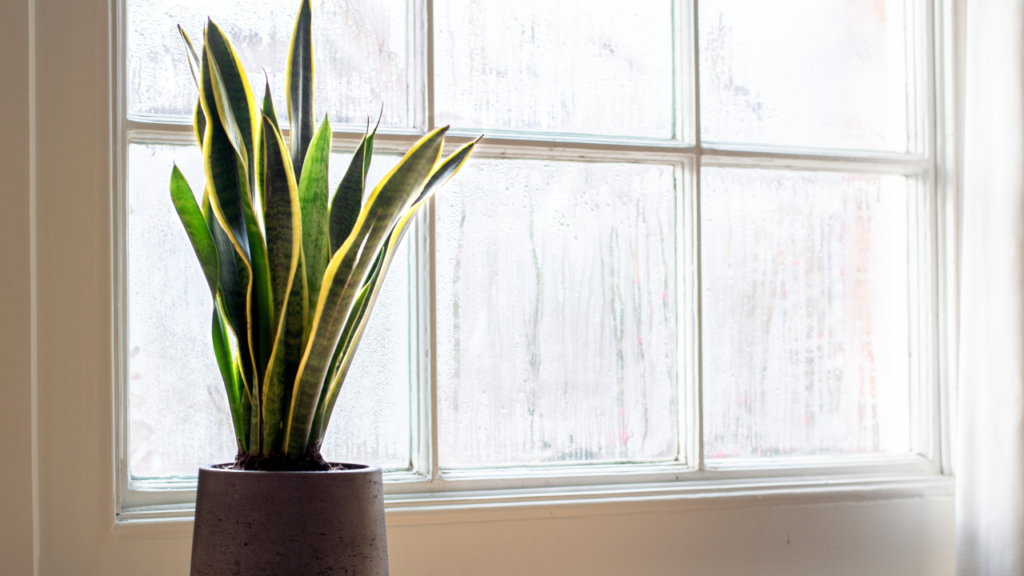Snake Plant, also known as Dracaena trifasciata or Mother-in-law’s Tongue, is a popular houseplant known for its hardiness and unique, upright leaves. This plant is perfect for beginners and those who don’t have a lot of light in their homes. Here’s a comprehensive guide to ensure your Snake Plant thrives:
| Snake Plant Quick Reference | |
|---|---|
| Attribute | Information |
| 🍀Common Names | Snake Plant, Mother-in-law’s Tongue, Saint George’s Sword |
| 🌿Botanical Name | Dracaena trifasciata |
| 🍃Family | Asparagaceae |
| 🌾Plant Type | Evergreen perennial |
| 📏Mature Size | Up to 2-4 ft. tall |
| ☀️Sun Exposure | Low to bright indirect light |
| 🌍Soil Type | Well-drained soil mix |
| ⚖️Soil pH | Neutral |
| 🌼Bloom Time | Rarely blooms indoors |
| 🎨Flower Color | Greenish-white |
| ❄️Hardiness Zones | 10-12 (USDA) |
| 🌎Native Area | West Africa |
1. Introduction:
- Why Snake Plant? This plant is low-maintenance, can survive without much water, and can thrive in low light conditions. It’s a natural air purifier, making it a great addition to any room. Its unique upright leaves add a touch of elegance to your space.
2. Toxicity Level:
- Pet Safety: Snake Plant is toxic to cats and dogs. If ingested, it can cause vomiting, oral irritation, and difficulty swallowing. Keep this plant out of your pets’ reach.
3. Air Cleaner:
- Purifying Properties: Snake Plant is included in NASA’s list of recommended plants for air purification. It removes benzene, formaldehyde, toluene, and xylene from the air.
4. Light Preference:
- Sunlight Needs: Snake Plants can grow well with eight to ten hours of indirect sunlight or a few hours of early morning direct sunlight. They can also tolerate shade, but inadequate light slows photosynthesis, stunts growth, and dilutes color in the leaves.
5. Water/Humidity:
- Watering Schedule: Water your Snake Plant when the soil becomes almost completely dry, then water thoroughly. These plants can go two months between watering in winter months. In warmer months, water no more than every two weeks.
6. Ideal Temperatures:
- Temperature Range: Snake Plants grow best in warm temperatures between 70 and 90 degrees Fahrenheit. They won’t tolerate frost and prolonged exposure to less than 50 degrees Fahrenheit will eventually lead to its demise.
7. Plant Food/Fertilizer:
- Feeding Schedule: Feed once in spring and mid-summer with a balanced, slow-release 10-10-10 fertilizer diluted to half strength. Do not fertilize in winter.
8. Repotting Frequency:
- When to Repot: Check the roots every two years, and if it is ready to repot, go up 2 inches in diameter with a new pot. Use containers with drainage holes, so your roots don’t get waterlogged.
9. Cleaning:
- Keeping it Clean: When cleaning Snake Plants, put them in a shower and fill a watering can with filtered water and rinse the leaves. Let drain and air dry naturally. Spritzing with filtered, bottled, or rainwater will also clean their leaves easily.
10. Common Issues:
- Pest Alert: Some Snake Plants may get spider mites, scales, or mealybugs. Identify and treat promptly, otherwise, the infestation may spread to other plants.
11. Propagation:
- Growing New Plants: Snake Plant is propagated in spring or summer by cuttings or division when plants are at least four inches tall. New shoots that emerge can also be potted independently.
In Conclusion: With the right care and attention, your Snake Plant will not only survive but thrive, becoming a beautiful addition to your indoor plant collection. Enjoy the lush, tropical ambiance it brings to your home or office!
